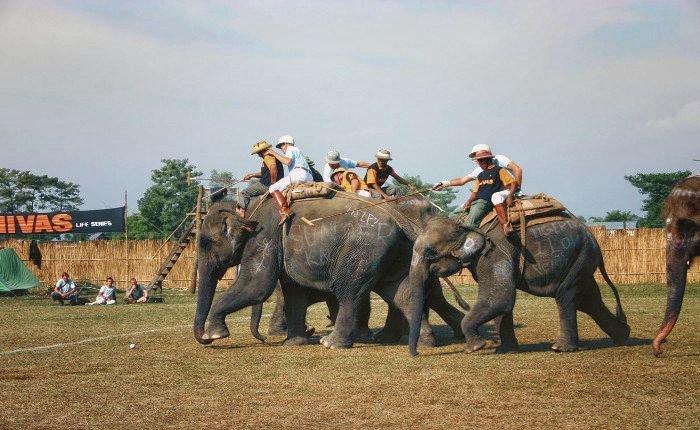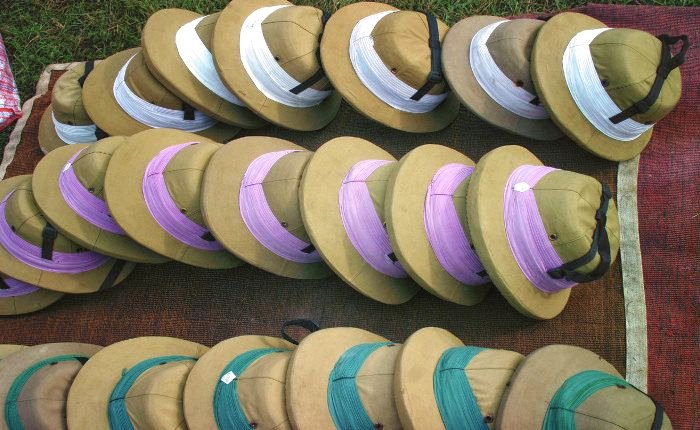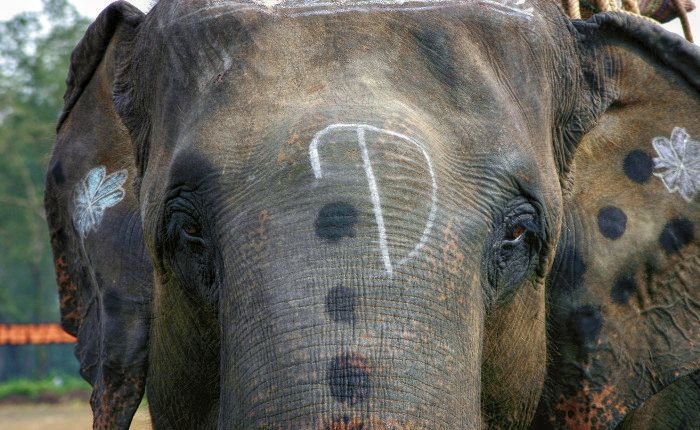For a moment your mouth goes dry.
Surrounded by terraced hills and Himalayan peaks Kathmandu is a tricky approach. The plane tilts plunges towards the runway. But the views are so spectacular panic is swiftly replaced by wonder. A jumble of dusty urbanity is surrounded by quadrangles of fertile green. Snowy peaks rise on all sides.
Nepal is beguiling from the moment you enter its airspace. Most visitors head for those peaks to go trekking. But I was bound for Chitwan National Park, home to some of the world's rarest rhinos. And one of the world's strangest competitions too.

That approach in an Airbus was nothing compared to Yeti Airways next day. Bound for Chitwan aboard a tiny 17-seater plane. We careered down the runway, propellers howling, I hoped the experience wouldn't be too abominable. The trip was in fact surprisingly smooth and touchdown on the grass airstrip bump-free. As soon as the propellers shut down, the noise of competition could be heard. Next to the airfield the World Elephant Polo Championships were under way. Each year teams from places as far afield as Scotland, Iceland, Thailand, Hong Kong and Sri Lanka compete here in the middle of the Nepalese bush in one of the world's most eccentric sports.
The idea came to two English explorers Jim Edwards and James Manclark over a few too many vodkas in a bar in the Swiss alps. Early experiments with a football weren't over-successful. But today the sport is seriously competitive. It’s even recognised by Nepal's Olympic Association. On a pitch next to the runway, two teams of five elephants with drivers and riders roped to their backs were swaying in front of a gaggle of villagers. Players, friends and local dignitaries sat in chairs necking beers and urging on their teams.
Ele-Polo follows similar rules to the equine game with a few extra regulations. Elephants can't pick up the ball with their trunks and they also aren't allowed to block the goal by lying down in front of it.

Within a couple of hours I was on elephant back, sat behind my driver, mallet in hand taking part in a friendly game. None of the journalists on our team - the Trunk Rockers - had any experience. They may take a while to get moving, but the jumbos develop serious momentum. And their drivers - known as mahouts - are adept at getting them into position for the rider perched behind to take a crack at the ball.

Initially the ball was at the far end of the field and I and my jumbo could only watch. Eventually it skidded into open space and we joined the game. It's nowhere near as easy as it looks, but leaning out from my jumbo I managed to dribble the ball along with my mallet. Suddenly I was in the goal area - the goal was wide open. All I needed to do was connect. The crowd roared. Aware that everyone was watching, I teed up for a mighty swing.
And missed completely. The game ended in a goalless draw.

I was on elephant back again early the following day. But this time without a polo mallet. Even if you don't coincide with the polo you can still ride the elephants on safari. The National Park is home to around 500 one-horned black rhino, the world's densest population of a very rare creature. And from the back of a jumbo they're fairly easy to see; far more so than from a noisy Landrover which frightens the rhinos away.
We clomped into the mist. On foot it would be impossible to see round the next bend, but 10 feet above the ground we enjoyed uninterrupted views across the dense foliage. For 20 minutes the only excitement was a couple of brightly plumaged birds. Then suddenly a rustle and a loud snort came from a clump of bamboo right in front of us. We plodded slowly through the reeds and there just ahead the armour plated backside of a huge rhino was disappearing into more foliage.
Read more > Elephant trekking in Sri Lanka
It took a good half hour to find more rhinos but the stillness of wet, misty morning was in itself magical. And then finally we heard another snort. We rounded a clump of bamboo and there was a mother and baby. They stood and watched us, deciding if we represented danger. After a while both went back to feeding. Slowly we approached closer. The angular chunks of bony armour beneath their scaly black skin were clearly visible. Apart from that horn on the nose, there's something quite cow-like about their features, but the rest of their bodies is Jurassic, otherworldly.

That sensation of being in another world is never far away in Nepal. Back in the capital Kathmandu, days later, I took a bumpy taxi ride to Durbar Square the historic centre of the city. It was 6pm. The square is home to a cacophony of sites all a little tumble down. Hindu and Buddhist shrines somehow seem completely at home next to a Neo Classical facade built by the ruling Rana dynasty.
Nepal was huge on the hippy trail in the 60s and I took a turn down Freak Street where the long hairs used to hang out. These days it's lined with coffee shops and souvenir stalls. Here I found the perfect souvenir. A rather ferocious face mask of an elephant. No sign of any polo mallets though.